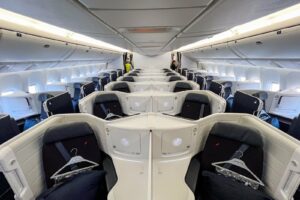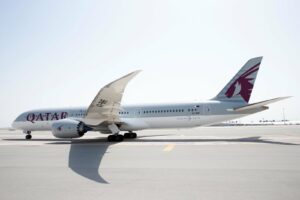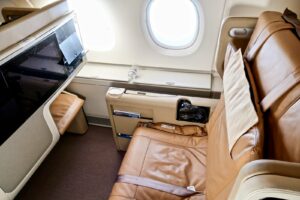Why would you fly to Oakland, California, if you’re going to San Francisco?
That might seem counterintuitive to a lot of travelers. But those who are more familiar with the area know that Oakland International Airport (OAK), which sits squarely on the east side of San Francisco Bay, is less than a half-hour drive from downtown San Francisco — not to mention just a few minutes from the city of Oakland.
Want more aviation news? Sign up for TPG’s free biweekly Aviation newsletter.
While it may be dwarfed by San Francisco International Airport (SFO) just across the bay, OAK officials think that part of the reason for that is that inbound travelers simply don’t realize where the airport is or that it presents a potentially more attractive option for people flying to the Bay Area.
That’s why Oakland airport officials said Friday that they are considering changing the airport’s name to “San Francisco Bay Oakland International Airport” to better reflect the airport’s location as part of an effort to attract more passengers and to prompt airlines to add more routes.
“Market research and interviews with airline partners have shown that routes have not performed as well as they should have due to the lack of geographic awareness, making air carriers reluctant to sustain and add new routes in Oakland,” Port of Oakland interim aviation director Craig Simon said in a statement.
Between July 2008 and March 2024, the airport added 54 new routes, Simon added. Of those, 39 were discontinued, along with six older established routes.
Airlines offer 46 destinations from OAK as of this June, according to data from aviation data firm Cirium. The airport’s largest airline is Southwest Airlines by a significant margin, followed by Alaska Airlines and Spirit Airlines. It also has regular service from Hawaiian Airlines, Mexican carrier Volaris, Allegiant Air and Delta Air Lines.
Bay Area breaks: The best hotels in San Francisco for a golden getaway
Still, Oakland officials said, there’s room for that route map and carrier list to expand, citing geographic awareness as a major hindrance. Market research carried out by the airport authority has found that local travelers are eager for more domestic and international destinations from the airport, while inbound travelers confirmed that they did not realize how close the airport was to San Francisco.
As of this June, SFO will have commercial service to 128 domestic and international airports on more than four dozen airlines, according to Cirium.
While the rebranding would tweak the airport’s name to add “San Francisco Bay,” the airport’s OAK code and branding would not change, officials said.
“Oakland helped put us on the map in California and we’re wholeheartedly supportive of this rebranding that acknowledges OAK’s economic position and influence in the San Francisco Bay area while staying true to its Oakland roots,” Southwest’s senior vice president of marketing Jennifer Bridie said in a statement.
Oakland, meanwhile, is far from the first airport to try and grow its relevance by associating more closely with a broader metropolitan region.
In 2006, the commercial airport in Manchester, New Hampshire, changed its name to “Manchester-Boston Regional Airport” in an effort to improve its visibility and highlight its location about 55 miles from central Boston. Airline passenger traffic at the airport — code MHT — has ebbed and flowed since but has been on a general upward trend since the COVID-19 pandemic.
MHT is currently serviced by American Airlines, Breeze Airways, United Airlines, Southwest Airlines and Avelo Airlines. Spirit Airlines also operates at the airport, though it plans to suspend its only service in May — the airline said it plans to resume seasonal service next winter.
Other airports have tried name changes for similar reasons.
Florida’s Melbourne International Airport (MLB) was among them. The airport, which sits on Florida’s central Atlantic coast, changed its name in 2015 to “Orlando Melbourne International Airport” to capitalize on the stronger name recognition with the city 70 miles inland that’s home to Walt Disney World and other popular theme parks. Officials at Orlando International Airport (MCO), however, did not like the name change, and — after years of back and forth — MLB eventually agreed to change the order of the cities in its title to go by its current name of Melbourne Orlando International Airport.
Other U.S. airports adopting the name of distant, more recognizable city names include Chicago Rockford International Airport (RFD) — about 85 miles from Chicago’s Loop — and New York Stewart International Airport (SWF), located about 70 miles from midtown Manhattan near the city of Newburgh, New York.
Related reading:
- Key travel tips you need to know — whether you’re a first-time or frequent traveler
- Best travel credit cards
- Where to go in 2024: The 16 best places to travel
- 6 real-life strategies you can use when your flight is canceled or delayed
- 8 of the best credit cards for general travel purchases
- 13 must-have items the TPG team can’t travel without



